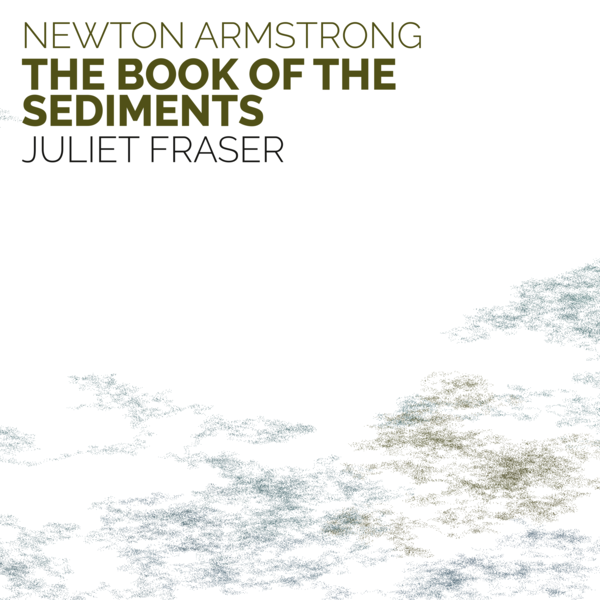
Newton Armstrong
The Book of the Sediments
Juliet Fraser
atd20
binaural download only

Armstrong uses Rachel Carson’s imagery as a prompt to contemplate ’the interactions between the momentary and the vast, and of endless process as a form of saying’. Performer and listener are invited into this contemplative state in which musical materials, like ocean sediments, drift in semi-regular motion.
Critical acclaim
Before Rachel Carson delivered the devastating alarum that constitutes *Silent Spring *(1962), she wrote a biography of the oceans of our planet. The Sea Around Us (1951) is that rare thing—a scientific book (Carson was a marine biologist) as well as a piece of prose poetry, a paean to the world and a warning to its fragility. It’s this book that underpins The Book of Sediments, a richly sensual voice and electronics composition by Newton Armstrong with the British soprano Juliet Fraser. Sediments is aptly named. Its progress is one of layers of sound and words rising and falling in gentle motion, gradually building up new tones and rhythms… The sounds live and then they die, and we, the listeners, become witnesses to that process. Using headphones offers the full, swooning effect of this meticulous and gently lovely recording.
Over 20 minutes Armstrong produces a quavering flutelike electronic stream—spread across four channels in live performance—that engages in a stunning dance with Fraser’s slowly articulated text. The sounds float weightlessly, but variable intonation rattles the meditative atmosphere, with certain sung syllables breaking the liquid flow and beguiling beating patterns grabbing attention.
Tracks
| 1 | The Book of the Sediments | 19:08 |
The Book of the Sediments was commissioned by Juliet Fraser with the generous support of Arts Council England’s National Lottery Project Grants, PRS Foundation’s Open Fund and the Vaughan Williams Foundation.
Liner notes
When I think of the floor of the deep sea, the single, overwhelming fact that possesses my imagination is the accumulation of sediments. I see always the steady, unremitting, downward drift of materials from above, flake upon flake, layer upon layer — a drift that has continued for hundreds of millions of years, that will go on as long as there are seas and continents.
— Rachel Carson, The Sea Around Us (1951)
Newton Armstrong’s The Book of the Sediments — part of Juliet Fraser’s project commissioning new works that respond to the writings of marine biologist and environmentalist Rachel Carson, particularly the three books that make up her ‘Sea Trilogy’ — contemplates the slow process of accretion on the ocean floor of silt, volcanic dust, meteoric elements, miniscule shells and skeletons, creating an ‘endless underwater snowfall’. In these sediments, Carson explains, are traces of the ‘dramatic and the catastrophic in earth history’.
Armstrong uses Carson’s imagery as a prompt to contemplate ’the interactions between the momentary and the vast, and of endless process as a form of saying’. Performer and listener are invited into this contemplative state in which musical materials, like the sediments, drift in semi-regular motion. The solo soprano, unamplified, intones her way through the text, slowly alternating notes and words at the pace of unhurried breathing: ‘all is all that all in all …’ With the addition of a new word, ‘written’, comes a new, higher pitch. And then again and again, rising up to ‘all is here written all that happened happened happened written written written written’. Fragments of text, half-hinted-at melodies and ambiguous field recordings become, in Carson’s words, ‘a sort of epic poem of the earth’, a narrative sedimented in sound.
The singer is flanked onstage by four loudspeakers, their tones overlapping with hers, coming in and out of microtonal agreement. The acoustics of the room in which the performance takes place determines the intensity of events. Armstrong instructs that ‘beating phenomena, psychoacoustical roughness, and warping of spatial attributes are features of the music’ to be neither suppressed nor foregrounded. What happens, happens. Performed live, the piece varies considerably in accordance with its environment. Heard as a recording, the gradual accumulation of materials submerges the listener within a sea of sound. Time slows but is not still. History is sedimented in the unfurling lines, repeatedly, endlessly.
Laura Tunbridge